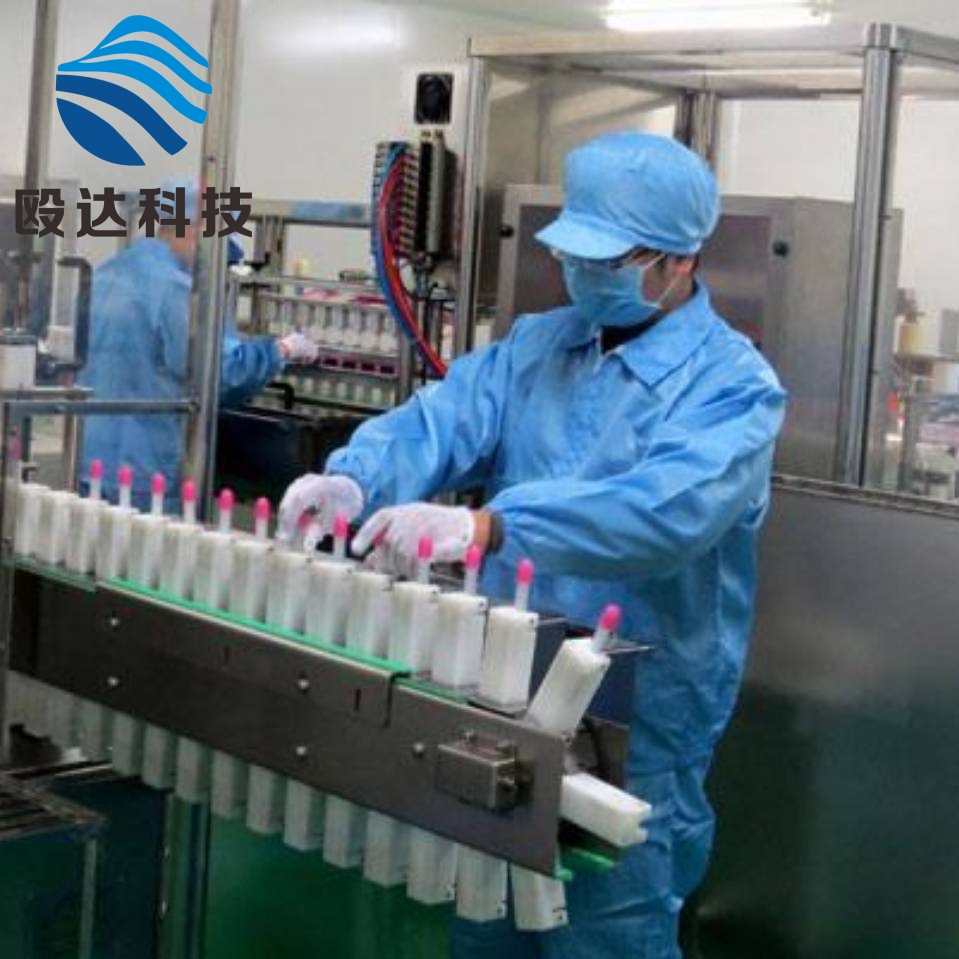-
Categories
-
Pharmaceutical Intermediates
-
Active Pharmaceutical Ingredients
-
Food Additives
- Industrial Coatings
- Agrochemicals
- Dyes and Pigments
- Surfactant
- Flavors and Fragrances
- Chemical Reagents
- Catalyst and Auxiliary
- Natural Products
- Inorganic Chemistry
-
Organic Chemistry
-
Biochemical Engineering
- Analytical Chemistry
- Cosmetic Ingredient
-
Pharmaceutical Intermediates
Promotion
ECHEMI Mall
Wholesale
Weekly Price
Exhibition
News
-
Trade Service
In March 2016, the General Office of the National Health and Family Planning Commission notified the hemodialysis room of An County Hospital in Shanglo Township, Shaanxi Province, of hepatitis C infection, of 39 of the 78 hemodialysis patients involved in suspected exposure to HCV Hepatitis C, the investigation results of the incident show that: the hospital hemodialysis room did not have hepatitis B, hepatitis C patients isolated dialysis, many people share heparin syringes, part of the dialysis device multiplefilter disinfection procedures are not standardized and other issues, is the main cause of this outbreak.
In December 2016, a competent technician in the inspection department of Zhejiang Central Hospital was sentenced to two years and six months in prison for the collection and purification of lymphocytes in the "closed antibody therapy" service, in serious violation of the professional operating norms of "one person, one tube, one discard", and repeatedly used the same straw to cross-absorb, stir and extract the lymphocytes of the people in operation, resulting in five patients infected with HIV, resulting in a major medical accident.
January 2017, the Health Planning Bureau of the City Yang District of Qingdao City, Shandong Province, received a report from the People's Hospital of the City Yang District that 9 patients were found to be infected with hepatitis B virus in the hospital's hemodialysis room.
investigation determined that this is a serious hospital infection caused by the hospital's hemodialysis room violating the hospital's operating procedures.
May 2019, the Information Office of the People's Government of Dongtai City, Jiangsu Province, issued a Circular on the Investigation and Handling of Infections in Dongtai People's Hospital.
, "A total of 69 cases of HCV infection were diagnosed after screening all patients with blood transfusions," the report said.
expert group investigation determined that the incident is a hospital infection management system due to the hospital infection management system is not in place and other reasons caused by the hospital infection incident.
hospital sense prevention and control, alarm bells ringing Q hospital infection, what are the common blood-source infectious diseases? 1) AIDS, pathogens: HIV (human immunodeficiency virus) 2) hepatitis B, pathogens: HBV (hepatitis B virus)3) hepatitis C, pathogens: HCV (hepatitis C virus) 4) syphilis, pathogens: syphilis helix Q hospital which operations are prone to the above-mentioned infection of blood-based infectious diseases? In the use of medical equipment or surgical instruments direct contact with the patient's blood, mucous membranes, body fluids, tissues and other operations, such as hemodialysis, traumatic diagnosis and treatment operations, surgery, dental surgery, endoscopy and other procedures, easy to spread of blood-borne infectious diseases.
are the causes of blood-sourced infectious diseases in the Q hospital? The most common reasons include: 1) the regional layout, unreasonable operating procedures, the treatment of infectious disease patients' equipment is not dedicated to the required special area, 2) infection control measures to carry out inappropriate, illegal and illegal operations, such as disposable medical supplies reuse, not the implementation of hand hygiene, medical equipment or equipment not according to Requires replacement or disinfection, violation of the operating principles of sterile technical norms, failure to regulate the timely disposal of medical waste, etc.; 3) failure to implement infection monitoring in accordance with the provisions of the Hospital Infection Management Measures, failure to detect infection cases and infection risks in a timely manner, and failure to report confirmed cases of infectious diseases within the prescribed time.
Q prevent the spread of blood-borne diseases in hospitals? 01 Standard Prevention is a set of infection prevention measures for all patients and medical personnel in hospitals, which can prevent the spread of blood-borne diseases as well as non-blood-borne diseases.
of standard prevention: equal treatment: blood, body fluids, secretions, excreta, incomplete skin and mucous membranes are considered contagious for all patients.
two-way protection: between medical staff patients, not only to prevent the disease from passing from the patient to the medical staff, but also to prevent the disease from the medical staff to the patient.
three kinds of isolation: for the three modes of transmission between doctors and patients, according to the transmission route on the basis of standard prevention to do a good job of contact isolation, droplet isolation, air isolation.
The contents of standard precautions include hand hygiene, the selection of masks, gloves, isolation clothing, protective clothing, shoe covers, goggles or protective screens according to the expected possible exposure and the characteristics of the mode of transmission of the disease, disinfection of the environment, surfaces, clothing, catering equipment, wearing appropriate protective equipment to deal with contaminated items and medical devices in the patient's environment, and safety injections.
on hand hygiene, mask selection, surface disinfection of specific operating standards and precautions, this series has made a special introduction, see the link below: hand hygiene, how much do you know? What exactly are the steps to washing your hands? Three steps, five steps, six steps, seven steps? Will the mask you're wearing keep you safe? Is alcohol disinfection 10-50s? 02 one-time medical items "one person, one discard" according to the "hospital infection management measures" and "sterilization management measures" provisions, all disposable medical supplies are strictly prohibited from reuse, immediately after use abandoned, harmless treatment.
drug distribution, skin test, insulin injection, immunization should be strictly one person, one needle, one tube, especially when carrying out skin test operation and immunization, do not change needles and not replace syringes.
can't inject heparin into different patients with the same syringe or heparin seal the deep vein tube.
disposable acupuncture acupuncture acupuncture is strictly prohibited.
medical devices and appliances shall comply with the relevant provisions of the State, and for disposable medical supplies that have expired and not been used, they shall not be disinfected and sterilized before being used in clinical practice.
03 reusable equipment "one person, one sterilization" medical personnel to carry out diagnosis and treatment operations to strictly follow aseptic technology operation, the use of medical equipment must be one person with one sterilization.
The Technical Specification for Disinfection of Medical Institutions" (WS/T367-2012) stipulates that: access to sterile tissues, organs, cavities or contact with the human body damaged skin, broken mucous membranes, tissues of medical equipment, appliances and articles should be sterilized;
common needs of sterilization equipment in medical treatment activities are: surgical instruments, puncture needles, hard endoscopes, soft endoscope accessories such as biopsy pliers, blood harvesting equipment used in the inspection department, dental extraction pliers, dental implants and tooth extraction mobile phones, periodontive probes, dental cleaning devices.
common needs to achieve a high level of disinfection effect above the equipment are: anaesthetic machine pipes, ventilator lines, digestive tract endoscopes, laryngoscopes, oral printing trays, salivators and so on.
details and precautions for sterilization, click on "Is alcohol disinfection 14-escliable?" 》。
04 Timely cleaning of disinfection sites, standardized medical waste treatment medical institutions should be all departments and departments according to the risk level divided into low risk areas, moderate risk areas and high risk areas.
different levels of environmental cleaning and disinfection management should be implemented in different risk areas.
surfaces of all types of risk areas should be cleaned and disinfected immediately in the event of contamination of the patient's body fluids, blood, excreta, secretions, etc.
the environmental surface contaminated by the patient's body fluids, blood, excreta, secretions, etc., it should be removed by adsorptionable materials, and then disinfected according to the characteristics of the contaminated pathogen using appropriate disinfectants.
in strict accordance with the requirements of medical waste management of medical waste collection, standardized transport, harmless disposal.
05 According to local conditions, each breaking medical institutions each department should be based on the characteristics of the department, risk to develop a department-specific hospital sense of prevention and control operating norms, especially for key departments, key links, key parts, the establishment of standardized processes to ensure that all prevention and control measures put in place.
e.g. hemodialysis room, ICU, oral medicine, etc., in accordance with national requirements to strictly control the hospital sense, this series has done a special presentation, see the link below: hemodialysis-related complications and control of the ICU hospital sense prevention and control, the most important of your catheter care right? After you get on the ventilator, there's so much more to do! In addition, hospitals need to do a good job of active infection monitoring, early detection of intervention in hospital infection incidents.
strengthen the disclosure of hospital information, timely warning of hospital sense of risk, timely find the cause of risk, to prevent the occurrence of infection aggregation and outbreak events.
hospital sense is no small matter, safety is greater than the day.
The sense of hospital is closely related to every medical worker, but also with every patient, do a good job of hospital sense prevention and control is to ensure the quality and safety of the bottom line requirements, in strict accordance with the provisions of the system for diagnosis and treatment operations, must not flow in the form, need to prevent problems before they happen.
References: 1. WS/T 510-2016 Hospital Infection Management Code. Health and Family Planning Commission of the People's Republic of China. 20162. Measures for the Administration of Hospital Infections (Decree No. 48 of the Ministry of Health of the People's Republic of China). 20063. Regulations on the Administration of Medical Waste (Decree No. 380 of the State Council of the People's Republic of China). 2003.4.WS/T 367-2012 Technical Specifications for Disinfection in Medical Institutions. Ministry of Health of the People's Republic of China.20125.WS/T 311-2009 Hospital Isolation Technical Specification. Ministry of Health of the People's Republic of China.20096.WS/T 512-2016 Regulations for environmental surface cleaning and disinfection management in medical institutions. People's Health and Family Planning Commission of the People's Republic of China.2016 Liu Qi will Source: Huashan Infection Copyright Notice: All text, images and audio and video materials on this website that indicate "Source: Mets Medicine" or "Source: MedSci Original" are owned by Meis Medical, are not authorized, and may not be reproduced by any media, website or individual, and shall be reproduced with the words "Source: Mes Medicine".
all reprinted articles on this website are for the purpose of transmitting more information and clearly indicate the source and author, and media or individuals who do not wish to be reproduced may contact us and we will delete them immediately.
at the same time reproduced content does not represent the position of this site.
leave a message here.







